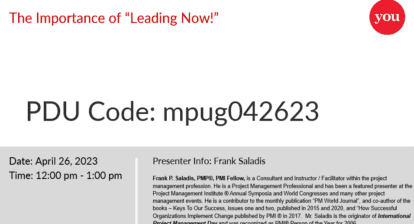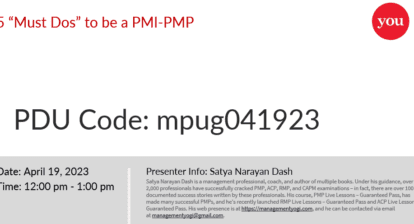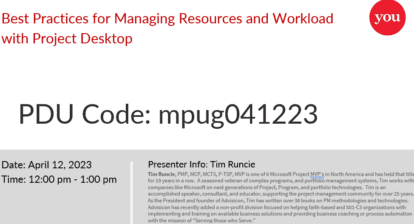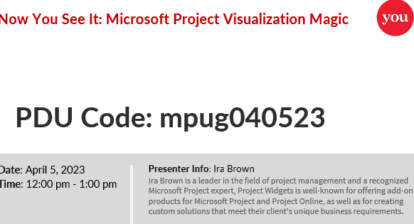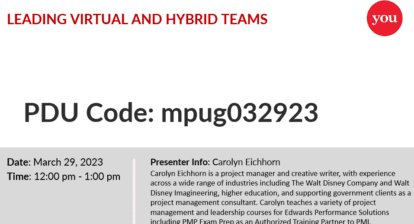The project management office or PMO can provide multiple functions within an organization. It can help monitor and control project performance, develop project management competencies and methodologies, manage multiple projects, manage strategy, and perform project management skills training. Yet PMOs come in multiple sizes and styles. In this article, I share the types of PMOs that are most prevalent along with their pluses and minuses and supply a list of ingredients for a successful PMO.
Excluding those PMOs specific to delivering a specific project or set of related projects, the PMOs we’ve seen for enterprise- or portfolio-level work typically follow one of several models.
The Policing PMO
This is frequently the PMO that gets set up when projects are out of control, resources don’t respond to changing business priorities, managers are either unable or unwilling to take responsibility for department efficiency and output, and/or organizational cultural conditions dictate that managers protect their resources and agendas from outside interference, including projects owned by other departments.
This type of PMO is inevitably doomed to failure. It’s typically set up out of a desire to fix inherent management problems, which means it’s almost always driven from the top down in an effort to get visibility to project and resource status. Those efforts are soon undermined by middle managers and others who view the required transparency and open communications as a threat. This type of PMO will languish sometimes for several years, attempting to collect project data, develop reporting and analysis, and attempting to prove to departmental project managers and functional managers that these efforts will be for the greater good.
The Hands-Off PMO
The hands-off or “consulting” PMO, often referred to as a Center of Excellence, has no direct responsibility for projects or project personnel. Most often it’s charged with developing and maintaining a standard methodology and providing a portfolio reporting framework. However, it often does not have PMs reporting into it and has little or no direct influence on project owners; therefore it has little chance of ensuring compliance with the methodology or reporting requirements.
These PMOs are sometimes in place for only a year or two, often providing one or more of the core PMO staff as “loan-out” project managers when a critical project arises. We’ve frequently seen these deemed irrelevant within two or three years and disbanded.
Conversely, we’ve also seen these PMOs thrive and provide value, albeit intangible, as a resource to project managers and others through the development and communication of project management best practices. This type of PMO can support the PM “sub-culture” by delivering guidance, coaching, knowledge sharing, and mentoring services.
The Portfolio Management PMO
This flavor of PMO has grown from the need to manage the enterprise project portfolio from a strategic investment perspective. In the context of limited budget and resources, the ability to funnel, analyze, and assist upper management to invest in the appropriate mix of ideas and projects is the primary focus of this type of PMO.
The Monitoring & Enabling PMO
This type of PMO is perhaps the most difficult to build and the most valuable when implemented effectively. This PMO has the dual responsibility of monitoring and reporting on project and portfolio progress and resources, while providing substantive assistance to project managers and others to deliver projects within agreed-upon parameters, usually cost or schedule. This PMO, therefore, is charged not only with collecting and analyzing project data to support management’s needs, but also with supporting the project managers in managing and delivering that information, and producing successful projects.
To function properly, this type of PMO requires:
- A deep understanding of the business project domain including the ins and outs of delivering projects in the organization.
- Access to a project management information system for data collection, analysis, and collaboration tools.
- Direct authority over project managers or at least dotted-line authority, including regular input to all PMs’ personnel reviews.
- Expert resources that can fill gaps in project manager knowledge, typically in the use of scheduling software and collaborative communications technologies.
- Other skill augmentation including cost management, contract management, process engineering, and business domain driven capabilities.
This type of PMO will also have a much stronger level of authority, most often in the areas of resource allocation and planning, project prioritization, and project state and change control.
Each of the models I’ve described comes with its own permutations. These usually fall into two broad areas: those with direct responsibility for the delivery of special projects and larger programs or not; and those that have project mangers reporting into them or not.
PMO Performance Variables
Underlying these functions and models are several performance variables that influence the effectiveness and overall business value of the PMO. Though not an absolute indicator, the variance in these factors usually has an impact on the value realized from the PMO.
- Percentage of projects within the PMO’s scope.
- Percentage of project managers within the PMO’s scope.
- Decision-making authority or influencing level.
- Supporting organizational culture.
- Project management maturity level.
In general, the greater degree to which these factors are in place, the more successful the PMO is likely to be, since each variable can reinforce the value of the PMO.
The Ingredients of a Successful PMO
While many factors play into the overall success of a PMO, I’ve seen common ingredients at play in those that are the most successful.
A formalized PMO charter. Authorized and communicated by senior management describing the objectives and purview of the organization as well as the business value expected as a result.
Deployment of a project management system. The overwhelming need to deliver action-oriented data to senior management in a timely manner makes the ability to automate and streamline reporting an essential component. That’s where software comes into play. If the executive team can’t rely on the PMO to supply reliable, trustworthy project portfolio data, the PMO will have a short corporate life. Here’s where an experienced third-party advisor can really come in handy. A consulting partner can make sure the deployment of software is timed correctly and the reporting properly aligned with the individual information needs of departments and divisions.
A staff development program. The most commons skill gaps are in the areas of project and resource scheduling. I recommend that the PMO push staff to tackle certification as a way to structure their areas of study and give them a concrete goal to pursue. These include certifications from both PMI and Microsoft.
Procedures. In order to codify best practices, some effort should be given to the creation of a company-specific project management handbook. This collection of standard operating procedures, guidelines, checklists, and other information can be used as an internal standard for the execution of projects, new-hire training, and process adherence.
By formally chartering the PMO and moving forward with a focus on staff development, professional certification, codification of project delivery processes and procedures, and deployment of a solid project management system, the PMO will be positioned to deliver tangible value to the organization and its leadership, establishing itself as a key contributor to the overall success of the enterprise.
This article was excerpted from a PM Providers white paper, “Effective Project Portfolio Management: The Case for an Enabling PMO.”
Related Content
Microsoft Project Training
Microsoft Project Courses :


